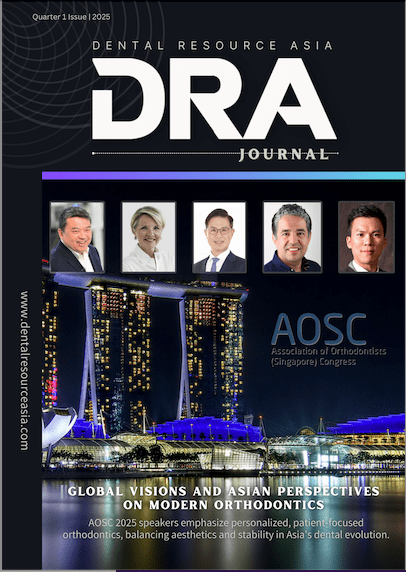- Global dental biomaterial market projected to grow at a CAGR of 9.2% from 2025 to 2030.
- Rising demand for dental implants, prosthodontics, and orthodontics fuels market expansion.
- North America dominates the market, while Asia-Pacific shows rapid growth due to improved healthcare infrastructure.
- Aging populations and technological advancements like 3D printing are key drivers.
- Key players include Straumann, 3M, Dentsply Sirona, and Royal DSM.
Market Overview and Growth Projections
The global dental biomaterial market is on a steady growth trajectory, according to a report published on MENAFN by GlobeNewsWire – Nasdaq. The market, valued at $12.1 billion in 2025, is expected to reach $18.8 billion by 2030, growing at a compound annual growth rate (CAGR) of 9.2%. This growth is driven by increasing demand for dental implants, prosthodontics, and orthodontics, alongside advancements in biocompatible materials and 3D printing technologies.
The report highlights that “North America is anticipated to hold a significant share due to the presence of major industry players and a growing elderly population.” Meanwhile, the Asia-Pacific region is witnessing exponential growth, fueled by rising disposable incomes, increased awareness of oral health, and expanding healthcare infrastructure. These factors are creating new opportunities for manufacturers and service providers in the dental biomaterial sector.
Demographic Shifts and Oral Health Challenges
Aging populations worldwide are a major factor driving the demand for dental biomaterials. As noted in the report, “the rapid increase in the elderly population is a significant driver for the dental biomaterial market.” Aging contributes to conditions such as reduced salivary flow, bone density loss, and prolonged wear, making older individuals more susceptible to dental issues like tooth decay, gum disease, and tooth loss.
Countries in the Asia-Pacific region, including Japan, China, and South Korea, are particularly affected by these demographic changes. Poor hygiene practices, unhealthy diets, and tobacco use have also led to a rise in oral health problems in these regions. However, the report emphasizes that “growing awareness about oral health combined with advancements in healthcare infrastructure is further propelling market growth.”
Technological Innovations Shaping the Industry
Technological advancements are playing a pivotal role in shaping the future of the dental biomaterial market. The adoption of 3D printing and biocompatible materials is transforming both functional and aesthetic dental solutions. These innovations allow for more precise and customized treatments, meeting the growing demand for durable, biocompatible, and aesthetically pleasing dental restorations.
In addition to 3D printing, the report identifies other material categories such as metallic biomaterials (e.g., titanium and stainless steel), ceramic biomaterials, and polymeric biomaterials as key contributors to market growth. Each material type serves specific applications, ranging from implantology and prosthodontics to orthodontics and research laboratories.
Regional Dynamics and Market Segmentation
The dental biomaterial market is segmented by material, application, end-user, and geography. Geographically, North America leads the market, supported by the presence of major companies and a well-established healthcare system. Europe follows closely, driven by supportive government initiatives and increased adoption of dental biomaterials for implants.
In contrast, the Asia-Pacific region is experiencing the fastest growth, attributed to rising disposable incomes, an increasing number of dental hospitals, and heightened awareness of oral health. The report notes that “countries like Japan, China, and South Korea have aging populations that are more susceptible to tooth loss and gum disease,” which in turn boosts demand for restorative solutions.
Competitive Landscape and Key Players
The report profiles several leading companies operating in the dental biomaterial market, including Straumann, 3M, Dentsply Sirona, Royal DSM, and Geistlich Pharma AG. These companies are investing in research and development to introduce innovative products and expand their market presence. Strategic initiatives such as mergers, acquisitions, and partnerships are also common strategies employed by these firms to maintain their competitive edge.
For instance, Straumann AG and Royal DSM are highlighted for their focus on developing advanced biomaterials that cater to the evolving needs of patients and dental professionals. The report provides detailed insights into company strategies, product portfolios, financial performance, and recent developments.
Conclusion and Future Outlook
The global dental biomaterial market is poised for substantial growth over the next five years, driven by demographic shifts, technological advancements, and increasing awareness of oral health. While North America remains the dominant player, the Asia-Pacific region is emerging as a high-growth market due to its rapidly improving healthcare infrastructure and rising demand for dental treatments.
As the industry continues to evolve, stakeholders must navigate challenges such as regulatory frameworks, supply chain dynamics, and shifting customer preferences. The report serves as a comprehensive resource for understanding market trends, forecasts, and strategic insights, enabling businesses to make informed decisions in this expanding sector.
For more information, the full report can be accessed through ResearchAndMarkets.com.
The information and viewpoints presented in the above news piece or article do not necessarily reflect the official stance or policy of Dental Resource Asia or the DRA Journal. While we strive to ensure the accuracy of our content, Dental Resource Asia (DRA) or DRA Journal cannot guarantee the constant correctness, comprehensiveness, or timeliness of all the information contained within this website or journal.
Please be aware that all product details, product specifications, and data on this website or journal may be modified without prior notice in order to enhance reliability, functionality, design, or for other reasons.
The content contributed by our bloggers or authors represents their personal opinions and is not intended to defame or discredit any religion, ethnic group, club, organisation, company, individual, or any entity or individual.

